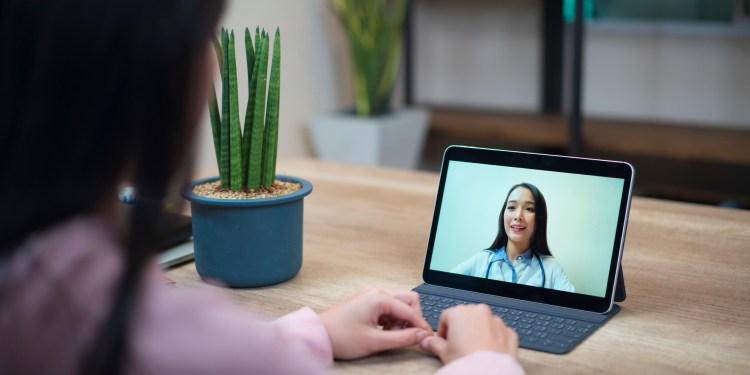COVID-19 Will Transform Healthcare Through Telehealth
Last Updated May 29, 2020

The coronavirus pandemic is accelerating the adoption of telehealth technology, according to an expert at Michigan State University. As a result, the way you receive healthcare will be dramatically transformed, even when the threat of COVID-19 subsides.
“I hope this is a paradigm shift,” said Greg Gulick, Assistant Professor with the Division of Public Health in the MSU’s College of Human Medicine. “If one good thing comes out of this pandemic, it will be in how we provide care using different methods, including telemedicine.”

Telehealth (also called telemedicine) is already in use today, but it has been an “afterthought” for many healthcare providers, Gulick said. In an age of social distancing, the need to minimize contact when providing and receiving care is more important than ever. Some diagnoses and treatments will still require in-person visits, but the shift toward telehealth is all but inevitable.
Telehealth offers many benefits for patients and healthcare providers. For example, according to Gulick, it will:
- Provide service on demand, instead of requiring patients to make and wait for appointments
- Lower the costs of healthcare — a telehealth session often costs much less than an in-person visit and costs much less than a visit to an urgent care clinic or emergency room
And, perhaps most important of all, it will encourage more people to seek out preventative care. “I think the convenience will impress a lot of patients,” Gulick said. “More preventative care is better than even more maintenance care.”
Many other healthcare experts agree with Gulick’s assessment that we’re at a tipping point for telehealth. The Kaiser Family Foundation, a nonprofit organization focusing on healthcare issues, said:
“While use of telehealth in the U.S. had been minimal prior to COVID-19, interest in and implementation of telehealth has expanded rapidly during the crisis, as policymakers, insurers and health systems have looked for ways to deliver care to patients in their homes to limit transmission of the novel coronavirus.
Frost & Sullivan, a business consulting firm, said before the COVID-19 crisis that the aging population was already advancing the need for telehealth.
“The rise in the senior population … is generating huge demand for digital health applications such as telehealth, chatbots, mHealth and AI,” said Victor Camlek, Frost & Sullivan’s Transformational Health Research Manager. He continued:
“This, coupled with anticipated shortages of physicians and medical staff, will compel all industry participants to embrace digitalization as the foundation of the next generation of patient access, clinical decision support, workflow management, and population health management.”
Why were healthcare providers slow to adopt telehealth before COVID-19? Gulick thinks the answer has to do with “inertia” in the industry. There’s also the issue of money. “I don’t mean to be cynical, but the financial incentives haven’t been there,” he explained. That’s because healthcare providers can charge for in-person visits than a telehealth session. Health insurance companies have been more enthusiastic about telehealth because of the savings involved, he said.
As people become more familiar with the benefits and convenience of telehealth, they’ll begin requesting it more from healthcare providers. That should drive demand and adoption up, Gulick said.
Telehealth won’t replace all in-person visits. It has its uses, “but can’t be over-relied on, Gulick said. A healthcare professional can’t look inside the inner ear, down a throat or up the nose during a video session. This might be possible in the future with telemedicine peripheral devices: Imagine an ear scope that attaches to your phone or computer that the patient can use from home.
Gulick said students in his health ethics courses are very interested in learning about the legal risks related to telehealth. “It doesn’t appear to be riskier,” he said. “There hasn’t been a single medical malpractice action based solely on telemedicine.”
Telehealth is just one of many technologies changing the healthcare industry. Big Data and artificial intelligence are also playing a role. Healthcare students today are learning how to prepare for the opportunities these technologies will provide.
“Healthcare has always been a great industry to work in because it’s so dynamic — but I think more so now because we’re facing these challenges, and we need to have dynamic leaders, critical thinkers and problem solvers.”


